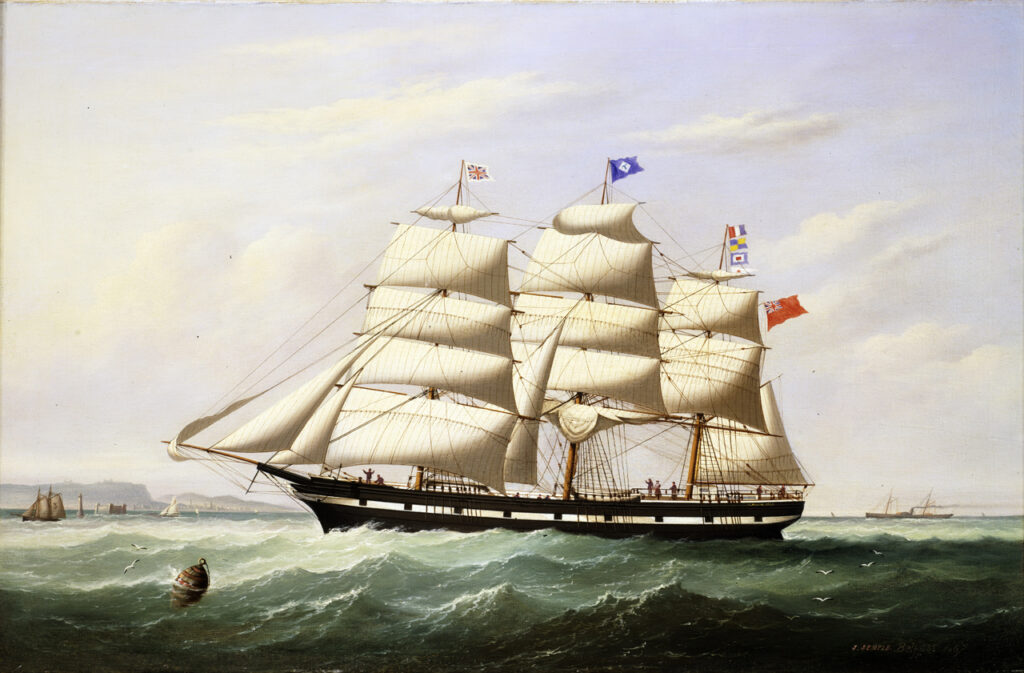The Ship – The Panama
By Averil Staunton
As some of the girls stood outside their accommodation at the busy built-up port, they would have seen the seagulls wheeling and diving around multiple tall-masted ships being loaded and unloaded with the rumble of barrels of assorted goods being rolled up the gangplanks and no doubt smelled the salt in the air and possible spices being unloaded.
Their accommodation was in the newly refurbished (1847) Elphinstone Emigration Depot at Plymouth Harbour, which could cater for 500 people with entry only to those with sailing tickets.
Their ship, called the Panama was a three mast, wooden Barque weighing 458 tons built in 1846 and under the command of Captain Thomas. Barques were the workhorse of the golden age of sail as they attained passages that nearly matched full-rigged ships, but could operate with smaller crews. This gateway to their new life would be their home for some months.
Once the girls’ were settled into berths on board the Panama, having taken into consideration that sisters or friends were accommodated close together, the Commissioners added a new mattress, bolster, blankets and counterpane; a large canvass bag, for holding linen and clothes, a knife and fork, two spoons, a metal plate, and a drinking mug for each emigrant, all of which articles they were allowed to retain upon landing…

The Panama also carried paying passengers which included: 23 adults, 1 child and 2 infants.
John 22 & Sarah Blair 26 and their infant Robert
Terance 37 & Anne 22 Farrilly
Malachi 23 & Margaret 23 Finnerty
Ralph 30 and Ann Jane 28 Hutchinson
Edmund 34 & Catherine 27 Neill
William 24 & Harriet 27 Oliver and infant
William 30 & Sarah 29 Savage
John 23 & Ann 20 Stephens
John 26 & Mary Anne 22 Walker – window on embarkation
Eliza Jane 30 & her daughter Harriet Amelia 7
Single Females (not being members of families)
Jane 30 & Hester 26 Cormick – gentlewomen from Mullingar
Judith Hogan 25 House servant from Bansha, Co Tipperary
